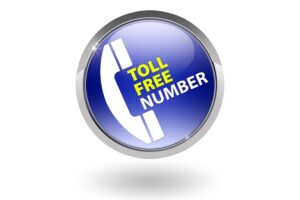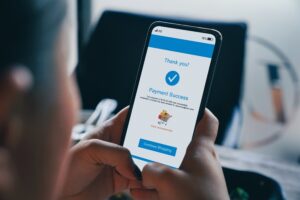Fringe benefits are company-paid incentives you offer employees above and beyond their regular salary. They can include traditional employee benefits (such as health insurance and retirement benefits) as long as the employer is contributing to the costs, thereby saving the employee money. Fringe benefits also include less traditional benefits like moving expenses, adoption assistance, or…
What is
What To Know About Getting a Business Loan Cosigner
A business loan cosigner is an individual who promises to make payments on the loan if the other borrower(s) are unable to do so. Getting a cosigner can improve your odds of landing a loan approval. However, you should be aware of the risks involved with doing this. For instance, missing a payment on a…
What Is a Toll-free Number & How Does It Work?
Toll-free numbers are telephone numbers distinguished by a three-digit prefix (e.g., 800 and 885), where the recipient covers the cost of the call rather than the caller. Many businesses opt for toll-free numbers for their credibility and convenience, especially since prospective customers can reach your team without worrying about call charges. This guide will explore…
What is Imputed Income? A Quick Guide for Small Businesses
Imputed income is the value of non-cash compensation that must be included as part of an employee’s taxable income. It’s crucial for small business owners to understand what imputed income is, as it directly affects payroll and tax reporting. By grasping what imputed income encompasses, small business owners can ensure compliance with tax laws, avoiding…
13 Important HR Metrics & How to Measure Them (+ Examples)
Employers use human resources (HR) metrics to measure how their human capital-related costs contribute to overall business performance. These can also be used to establish a baseline for your business to track productivity, revenue, training, and more. As your numbers increase (or decrease) around this baseline, you can determine steps to take, as necessary, to…
What is a Purchase Order Number? Key Components & Importance
A purchase order (PO) number is a unique identifier assigned to a PO document. It simplifies tracking the PO throughout the process, from creation to fulfillment, for both the buyer and seller. Also, it aids in recordkeeping for accounting and auditing purposes. By referencing the PO number on communications, invoices, and other documents, you can…
What Is a Pro Forma Invoice? Uses & Included Information
A pro forma invoice (also proforma invoice) is a preliminary invoice sent to the buyer before the delivery of goods. It includes all the essential information of an invoice—except that the prices and amounts stated are quoted values only. It is not a legal contract between the buyer and the seller and is subject to…
What Are Embedded Payments? Small Business Guide
Embedded payments are a convenient way for businesses to accept payments directly within their websites or apps—without having to deal with different providers—while simplifying the checkout process for customers. Understanding the dynamics and intricacies of embedded payments is important for small businesses that want to streamline transactions, improve customer satisfaction, increase operational efficiency, and drive…







